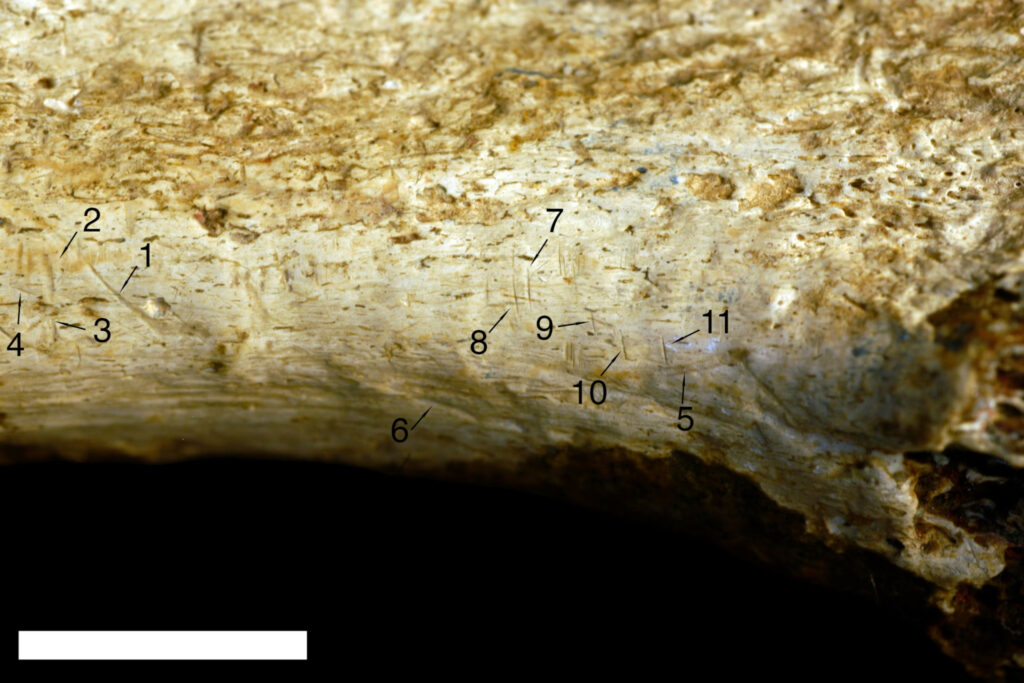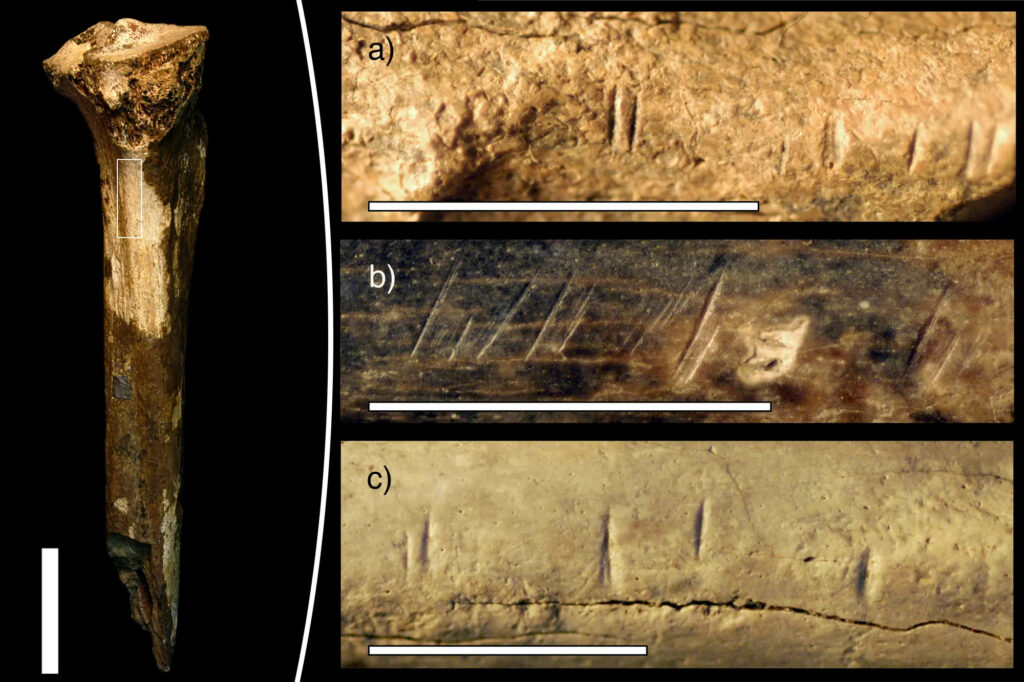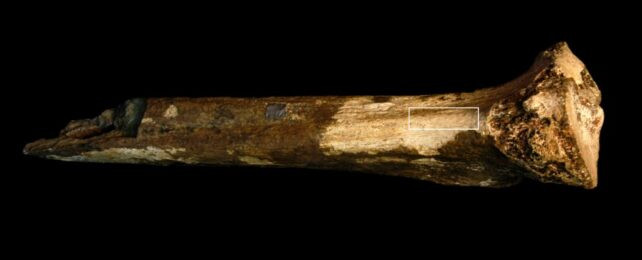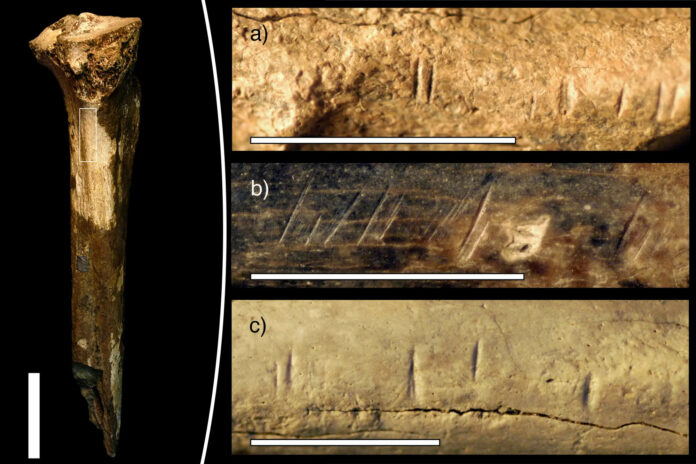Unearthing the Oldest Evidence of Hominin Cannibalism
A Chilling Discovery in Northern Kenya

In a groundbreaking discovery, researchers from the Smithsonian’s National Museum of Natural History have uncovered the oldest definitive evidence of cannibalism among our ancient human relatives. The story begins 1.45 million years ago in what is now northern Kenya, where a fossilized shin bone tells a tale of survival, desperation, and perhaps even inter-species conflict.
Decoding the Marks of Ancient Butchery

The fossilized tibia, believed to belong to a relative of Homo sapiens, bears nine distinct cut marks that speak volumes about our ancestors’ behavior. These marks, consistent with damage from stone tools, are strategically located where the calf muscle would have attached to the bone. Their uniform orientation suggests a swift and deliberate attempt to remove flesh, likely for consumption.
A Complex Tapestry of Ancient Life

While the evidence points towards cannibalism, the exact nature of this ancient act remains shrouded in mystery. The bone’s species is uncertain, leaving open the possibility of one hominin species consuming another. Adding to the intrigue, researchers identified bite marks from a large cat, possibly a saber-toothed predator, painting a vivid picture of the complex interactions between ancient hominins and their environment.
Rewriting History Through Museum Collections
The Power of Fresh Perspectives

This discovery highlights the importance of revisiting museum collections with new techniques and perspectives. By re-examining existing fossils, researchers have opened a window into our distant past, challenging our understanding of early hominin behavior and ecology.
Looking to the Future of Paleoanthropology

As scientists continue to unravel the mysteries of our ancient relatives, this 1.45-million-year-old shin bone stands as a testament to the enduring value of archaeological research. It invites us to question our assumptions about early human behavior and encourages further exploration of our complex evolutionary history.

